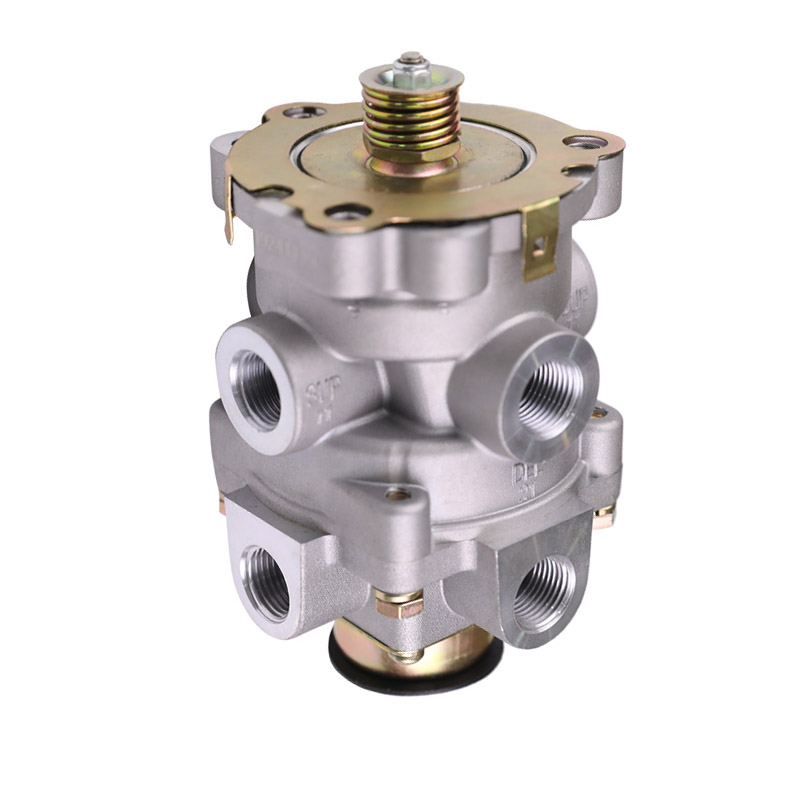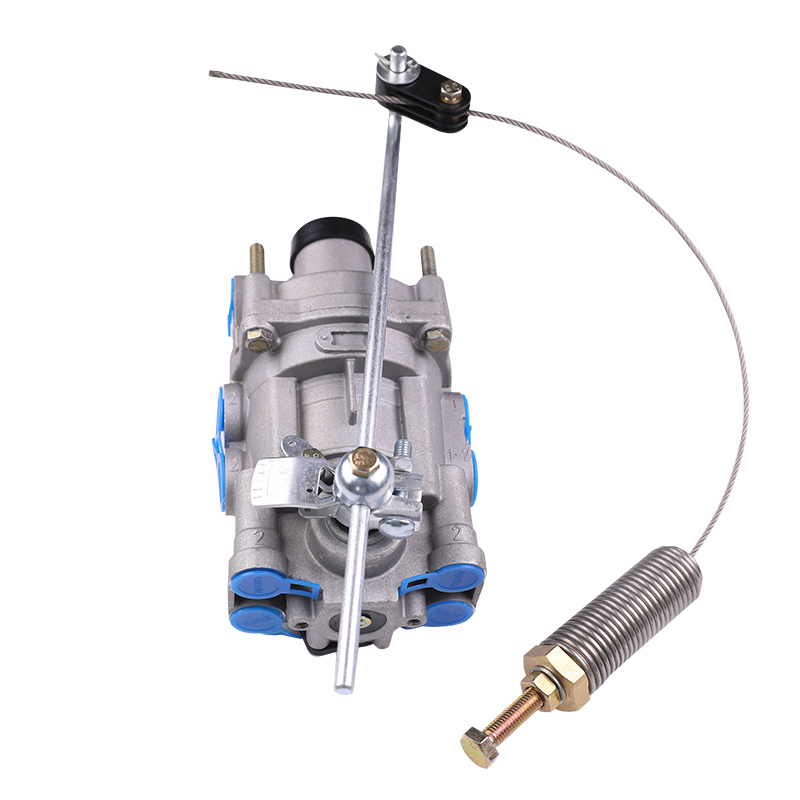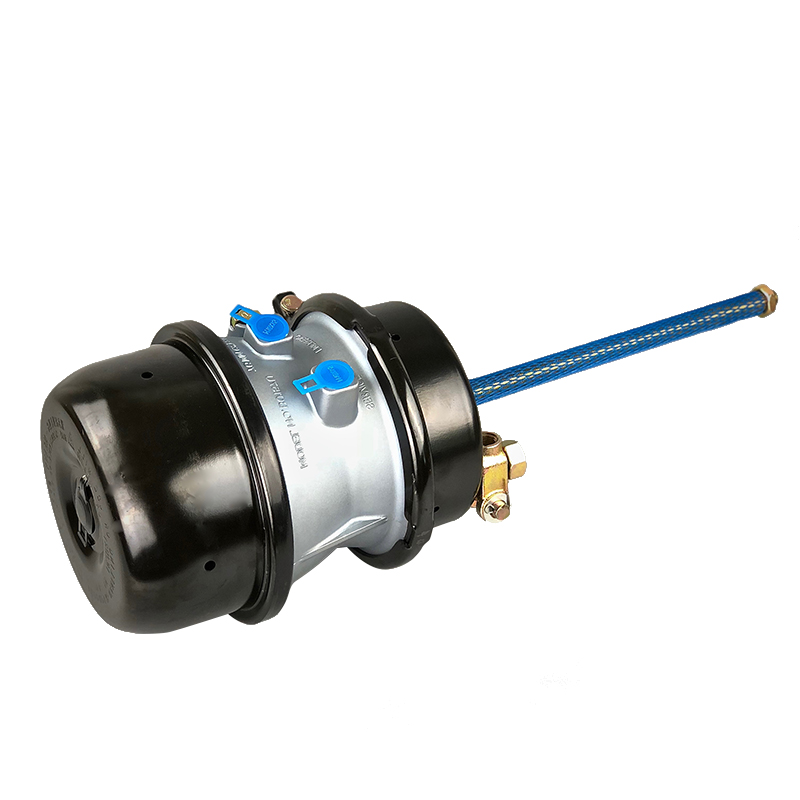The Parking Release Valve (PRV) is a critical control element in air brake systems. Its design precision and component reliability directly determine the safety performance of heavy vehicle parking brakes. The PRV precisely controls the inflation and deflation of the Spring Brake Chamber, acting as the key hub for engaging and disengaging the parking brake. A deep understanding of its internal structure is essential for effective fault diagnosis and system maintenance.
The Pneumatic Control Core: Piston and Poppet/Spool
The Piston: The Driving Force for Pressure Conversion
The heart of the Parking Release Valve is the Piston. This component is responsible for receiving the control air pressure signal from the cab's hand-control valve or foot pedal valve.
-
Functional Role: The piston is designed with a specific effective area. When control air pressure is supplied, it converts this pressure into a force that overcomes the tension of the internal spring, thereby driving the valve element (poppet or spool) to move and change the state of the air circuit.
-
Structural Characteristics: Pistons are typically manufactured from lightweight yet high-strength materials, such as aluminum alloys or engineering plastics. The sides are equipped with a Piston Seal to ensure high air tightness between the control pressure chamber and the atmosphere or the brake chamber. The piston's Stroke is precisely calculated to guarantee that the valve is fully switched even at the minimum control pressure.
-
Professional Value: The smooth movement and accurate sealing of the piston are key technical factors in ensuring the PRV's Response Time and minimizing internal leakage.
The Valve Poppet/Spool: The Precision Guide for Airflow
The Valve Poppet or Spool Valve is the executive component that directly controls the air path.
-
Functional Role: The valve element is mechanically linked to the piston. When the piston is pushed, the valve element moves within the valve body, responsible for opening or closing the Supply Port (to the spring brake chamber) and the Exhaust Port (to the atmosphere).
-
Structural Characteristics: It is usually columnar or disc-shaped, manufactured with extremely high surface finishing precision. The valve element is fitted with Valve Seat Seals, which must withstand frequent opening and closing impacts while maintaining reliable sealing under various air pressures.
-
Professional Value: The design of the valve element dictates the PRV's Flow Characteristics, directly impacting the speed of parking brake release and the response time during emergency braking.
Sealing, Limiting, and Housing: Gaskets, Springs, and Body
Critical Seals: The Ultimate Guarantee of Air Tightness
The long-term reliability of the PRV heavily depends on its various internal Seals and Gaskets.
-
Types and Function: These primarily include dynamic seals for the piston and valve element, and static seals for the valve body interfaces. They are typically made from wear-resistant, oil-resistant, and temperature-tolerant elastomers (e.g., Nitrile Rubber NBR or Polyurethane PU).
-
Environmental Challenges: The compressed air in the braking system is not perfectly dry; seals must resist corrosion from oil mist, moisture, and micro-particles. Material aging, leading to internal leakage, is a major cause of PRV failure.
-
Professional Value: The selection and shape design of the seals (such as lip seals, O-rings) must strictly match the surface finish and tolerance of the mating parts to maintain the specified Leakage Rate standard after millions of operating cycles.
The Return Spring: The Driving Force for Reliable Locking
The Return Spring is crucial for ensuring the Fail-Safe mechanism.
-
Functional Role: When the driver releases the control air pressure, the return spring provides the necessary mechanical force to push the piston and valve element back to the Locked (Parking) position. In this position, the supply port is closed, and the air in the spring brake chamber is quickly exhausted, activating the parking brake.
-
Structural Characteristics: The spring is usually made of high-elasticity, fatigue-resistant, quality spring steel. Its Stiffness and Preload are precisely calibrated to ensure the valve can be actuated at the specified minimum control pressure and quickly reset when the pressure is removed.
-
Professional Value: Spring performance degradation will directly affect the reliability of the parking brake. In professional maintenance, the spring's free length and load testing are important diagnostic indicators.
The Valve Body and Ports: The System Integration Platform
The Valve Body is the structural component that houses all internal parts.
-
Structural Characteristics: The valve body is often manufactured from cast aluminum or die-cast zinc alloy, offering high strength and good corrosion resistance. It integrates all necessary Pneumatic Ports: the control pressure inlet, the supply port (from the air tank), the outlet port (to the brake chamber), and the exhaust port.
-
Professional Value: The Internal Flow Passage Design of the valve body is critical for minimizing air flow resistance, directly relating to the efficiency of braking or release. Modern designs also incorporate Modularity for easy integration into more complex braking control units.
Auxiliary Functional Components: Limiting and Silencing
Muffler/Exhaust Filter: Environmental and Performance Considerations
The Muffler or Exhaust Filter is located at the exhaust port.
-
Functional Role: Their purpose is to reduce the noise generated when the PRV exhausts air, and simultaneously prevent external dust, moisture, or other contaminants from entering the valve body through the exhaust port, which could affect the normal operation of the piston and seals.
-
Structural Characteristics: Typically made of sintered metal or porous plastic. They require periodic inspection and cleaning to prevent blockage, which could restrict exhaust flow and cause slow parking brake release.
Limiting Mechanisms: Protecting the Stroke
Some designs include Stops or Limiting Mechanisms.
-
Functional Role: These mechanisms are used to limit the maximum stroke of the piston and valve element, preventing component over-travel that could cause stress damage or mating failure, thereby ensuring the stability and durability of the valve's operation.
Every internal component of the Parking Release Valve is a testament to precision pneumatic engineering. They work collaboratively to form the safety foundation of the vehicle's braking system. A deep understanding of these core components is essential professional knowledge for ensuring vehicle safety and increasing maintenance efficiency.






